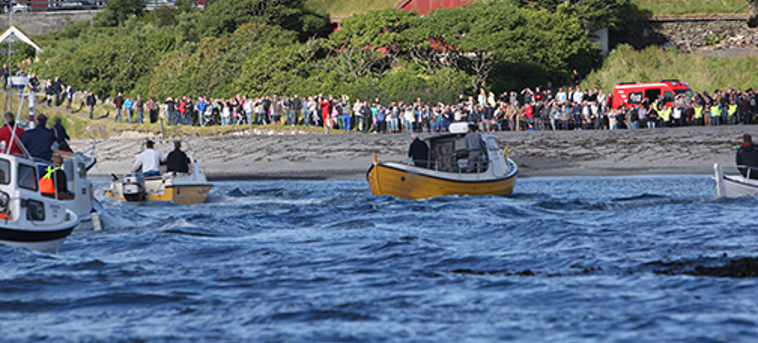
450 years of statistics
Archaeological digs show that pilot whales have been a staple part of the Faroese diet since the Viking age. Official records of all pilot whale hunts have been kept since 1584.
The Faroese have eaten pilot whale meat and blubber since they first settled the islands. Today, as in times past, the whale drive is a community activity open to all, while also well organised on a community level and regulated by national laws.
Today, both traditional Faroese boats and modern boats participate in a whale drive.
Pilot whale hunting has always been regulated. The Sheep Letter, a Faroese law from 1298 outlines rules for the use of whales. A dedicated regulation for pilot whaling was enacted in 1832 and was most recently updated in 2013.
The Faroese authorities have accurate statistics of whale catches dating back to 1584. These are most probably the longest continuous statistics for the use of wildlife anywhere in the world.
These statistics are very valuable because they show how many whale hunts have taken place in the Faroes, when and where they took place and how many whales were caught.
The numbers show that since 1584 there have been almost 2000 pilot whale catches. Of these, 67 % have occurred between July and September.
This corresponds well with what the Faroese have always observed. The best time for pilot whales is August. Most whale catches have taken place during this month over the past 450 years.
SUSTAINABLE
COMMUNAL
FOOD
NATURAL


